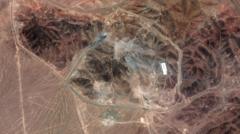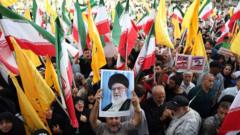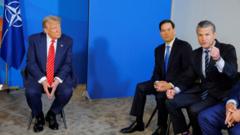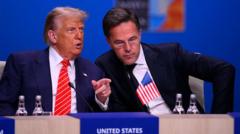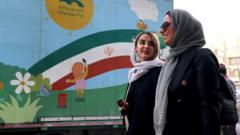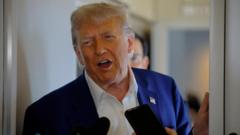As Canada votes on a pivotal election Monday, the political landscape has shifted dramatically due to U.S. President Trump, who has challenged the country's identity and trade relations. The race is primarily between Mark Carney's Liberals and Pierre Poilievre's Conservatives, both leaders starkly aware of the political stakes amidst rising national sentiments.
Canada Faces Historical Election Influenced by U.S. Politics
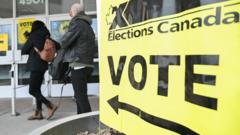
Canada Faces Historical Election Influenced by U.S. Politics
Canadians head to the polls in a contest deeply affected by President Trump’s controversial remarks and policies.
The election is about much more than ballots; it is viewed as a referendum on how Canada should position itself in the wake of Trump's provocative threats and tariffs. Conservatives were once expected to dominate, but the political climate has transformed, leaning toward the Liberals as they rally support against perceived threats from the U.S. leader.
Pre-election polls show a tight contest, with Carney's Liberals inching slightly ahead, signifying a turnaround from earlier predictions of a Conservative landslide. Campaigning intensified in the days leading up to the vote, especially following a tragic event in Vancouver where a car ramming incident claimed 11 lives, escalating tensions within the campaign trail. Carney, the incumbent Prime Minister, took significant steps to express solidarity with affected communities, redirecting campaign efforts to address national security concerns.
The simmering resentment toward Trump—who insinuated that Canada could become the "51st state"—infused an unexpected jolt into Canadian nationalism. The Liberal Party, previously seen as waning, capitalized on Canadian outrage, positioning itself as the defender of national sovereignty and integrity against U.S. encroachment.
On the flip side, Poilievre, as the Conservative leader, emphasizes a message of change and accountability, particularly focusing on economic issues like housing costs and crime rates which resonate deeply with everyday Canadians. This approach draws on public dissatisfaction with the last decade under Liberal governance, catalyzing Poilievre’s push to reclaim parliamentary majority.
While smaller parties like the NDP and Bloc Québécois once held sway, the escalating crisis underlined by Trump's administration has reaffirmed support for the two larger parties as voters seek stability amid uncertainty. Jagmeet Singh, leading the NDP, has struggled to maintain relevance in this polarized atmosphere, hampered by recent tragedies and the overpowering presence of the main parties.
Historically, Canada has been governed by either the Liberals or Conservatives, setting the stage for a significant shift depending on the election's outcomes. As polls prepare to open across the nation, more than 7 million Canadians have already voted early, underscoring an active engagement that speaks to the high stakes of this extraordinary election. Results will emerge throughout the day as the country awaits its next chapter amid an evolving political stance influenced heavily by the south.
Pre-election polls show a tight contest, with Carney's Liberals inching slightly ahead, signifying a turnaround from earlier predictions of a Conservative landslide. Campaigning intensified in the days leading up to the vote, especially following a tragic event in Vancouver where a car ramming incident claimed 11 lives, escalating tensions within the campaign trail. Carney, the incumbent Prime Minister, took significant steps to express solidarity with affected communities, redirecting campaign efforts to address national security concerns.
The simmering resentment toward Trump—who insinuated that Canada could become the "51st state"—infused an unexpected jolt into Canadian nationalism. The Liberal Party, previously seen as waning, capitalized on Canadian outrage, positioning itself as the defender of national sovereignty and integrity against U.S. encroachment.
On the flip side, Poilievre, as the Conservative leader, emphasizes a message of change and accountability, particularly focusing on economic issues like housing costs and crime rates which resonate deeply with everyday Canadians. This approach draws on public dissatisfaction with the last decade under Liberal governance, catalyzing Poilievre’s push to reclaim parliamentary majority.
While smaller parties like the NDP and Bloc Québécois once held sway, the escalating crisis underlined by Trump's administration has reaffirmed support for the two larger parties as voters seek stability amid uncertainty. Jagmeet Singh, leading the NDP, has struggled to maintain relevance in this polarized atmosphere, hampered by recent tragedies and the overpowering presence of the main parties.
Historically, Canada has been governed by either the Liberals or Conservatives, setting the stage for a significant shift depending on the election's outcomes. As polls prepare to open across the nation, more than 7 million Canadians have already voted early, underscoring an active engagement that speaks to the high stakes of this extraordinary election. Results will emerge throughout the day as the country awaits its next chapter amid an evolving political stance influenced heavily by the south.


